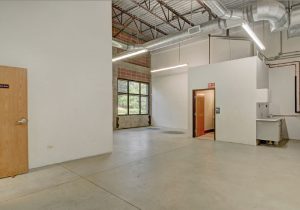What is Driving Boulder’s Industrial Boom?
There’s never been a better time to be a warehouse.
Especially in Boulder County.
The industrial market is thriving in the greater Boulder market and has been for the past 5 years. Investments in industrial buildings in 2017 shattered the all time record: There were $330 million industrial sales closed in 2017, twice(!) the previous record which was set in 2016. What factors are driving Boulder’s industrial sector boom?
Flex Real Estate and Tech
When an Office and a Warehouse get married, you get Flex Space. More technically, it is property zoned for office or light industrial.

The Boulder metro area has roughly 12.5 million SF of flex inventory, which is nearly 50% of the broader industrial inventory. Out of the 390 metro areas in the country, only the San Jose metro market has a higher relative proportion of flex space. Why? Flex space is in huge demand with the tech industry which is thriving in San Jose and Boulder alike. In fact, we’ve discussed before the idea that Boulder is a growing spoke on the Silicon Valley hub. Some tenants specifically need flex space for their business, but they are left to compete with the demand of a flush tech industry which has developed a taste for this type of property. Vacancies are low and flex space on the market goes fast. According to CoStar, the vacancy rate for flex space was at a cycle low at the start of 2019.
Home Delivery and Logistics Real Estate
Logistics is a submarket of industrial that includes warehouses, distribution facilities, and fulfillment centers which operate as intermediaries in the process of moving goods. Easy, large example: the Amazon Fulfillment Center near I-25 and 144th Ave.
Real estate developer Etkin Johnson has been busy constructing speculative industrial buildings (meaning, buildings that are constructed without any leasing commitments) in Louisville’s Colorado Technology Center (CTC). One, a 120,00 SF Flex building was completed and almost entirely leased by Sierra Nevada Corp in 2016. The other, a 153,000 SF Logistics building was completed in 2017. They have since broken ground on the first of three additional buildings (all at CTC) totaling over 400,00 SF of space. Meanwhile, a 108,000-SF FedEx van facility located in CTC was completed in October 2018.
These represent some of the largest speculative warehouses ever constructed in the Boulder metro area. It also reveals a high level of confidence among developers and investors. Despite all the new construction, vacancies for Logistics properties are holding firm. Why?
According to the Urban Land Institute:
Beyond the e-commerce effect, demand is also being powered by the ability to deliver online orders much more quickly. Retailers need closed-in industrial space that can accommodate the short delivery windows, and companies also have an appetite for newer, more modern facilities.
Whether the store is online or brick-and-mortar, the demand for quick delivery to home (and store) is increasing. And it is driving the need for Logistics warehouse space in an unprecedented way.
—
The outlook for industrial sector remains strong. According to CoStar, vacancy rates for Logistics space is forecasted at less than 6% for next next five years and rent for Flex space is expected to increase 4.5% in the next year. As Boulder continues to attract more innovation and consumers continue to demand faster delivery of goods, we can expect blue skies ahead for industrial properties.
